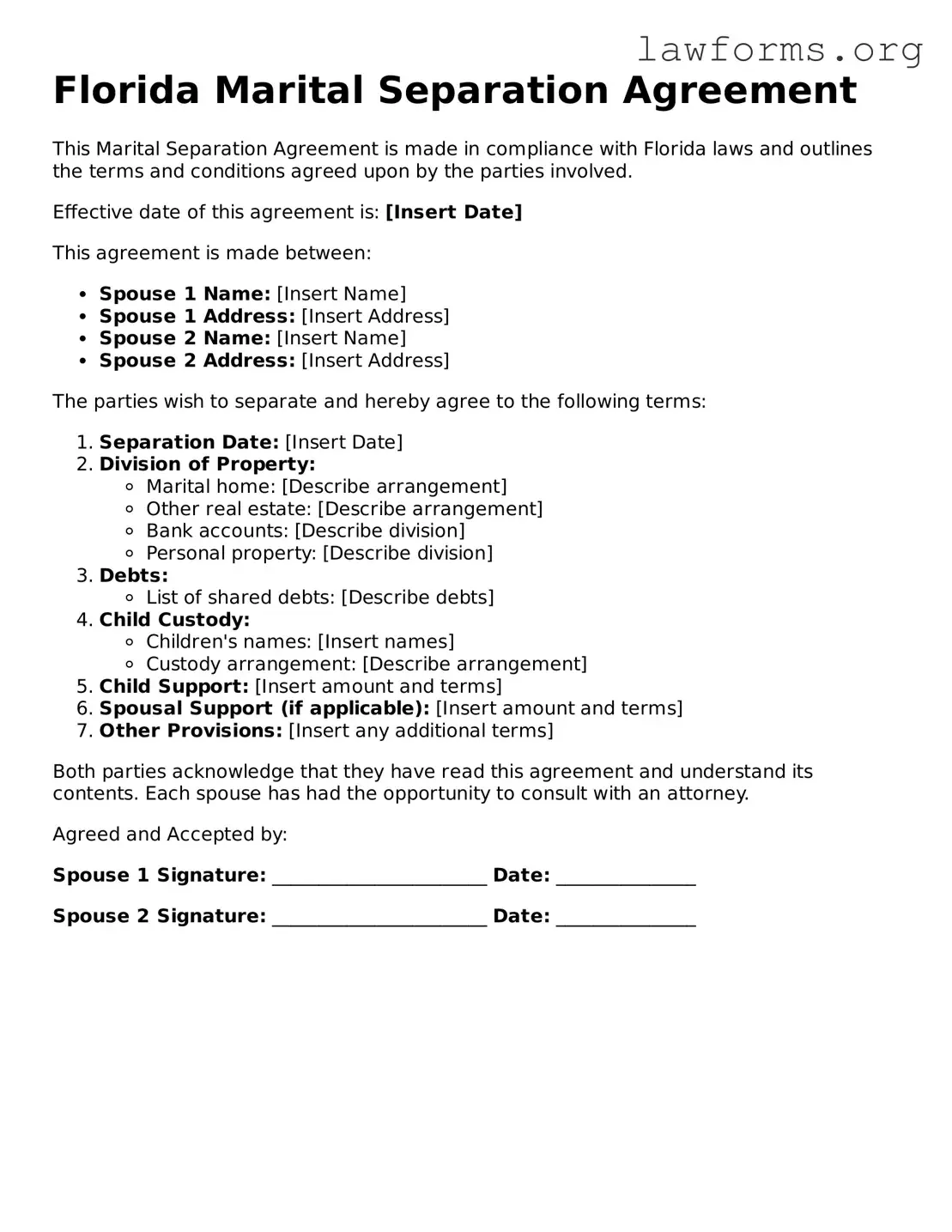Florida Marital Separation Agreement
This Marital Separation Agreement is made in compliance with Florida laws and outlines the terms and conditions agreed upon by the parties involved.
Effective date of this agreement is: [Insert Date]
This agreement is made between:
- Spouse 1 Name: [Insert Name]
- Spouse 1 Address: [Insert Address]
- Spouse 2 Name: [Insert Name]
- Spouse 2 Address: [Insert Address]
The parties wish to separate and hereby agree to the following terms:
- Separation Date: [Insert Date]
- Division of Property:
- Marital home: [Describe arrangement]
- Other real estate: [Describe arrangement]
- Bank accounts: [Describe division]
- Personal property: [Describe division]
- Debts:
- List of shared debts: [Describe debts]
- Child Custody:
- Children's names: [Insert names]
- Custody arrangement: [Describe arrangement]
- Child Support: [Insert amount and terms]
- Spousal Support (if applicable): [Insert amount and terms]
- Other Provisions: [Insert any additional terms]
Both parties acknowledge that they have read this agreement and understand its contents. Each spouse has had the opportunity to consult with an attorney.
Agreed and Accepted by:
Spouse 1 Signature: _______________________ Date: _______________
Spouse 2 Signature: _______________________ Date: _______________
